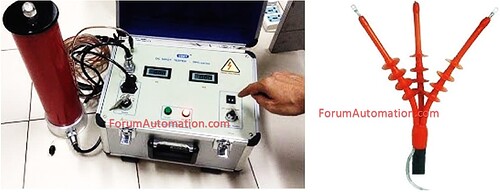Why is Hipot Testing important for 11 kV Cables?
Hipot Test
The Hipot (High Potential) Test is an essential diagnostic test that determines the insulation strength of the high-voltage cables & equipment.
For an 11 kV cable, the test normally consists of applying around 15 kV AC for 1 minute across the conductor & earth.
Throughout this procedure, the leakage current is closely monitored to ensure that the insulation remains below acceptable limits.
Purpose of Hipot Test
The main purpose of doing a Hipot test is to confirm that the cable insulation is in good condition and capable of withstanding anomalous overvoltages.
It assists in the detection of possible concerns such as insulation deterioration, moisture intrusion and the chance of partial discharge all of which could result in major failures if left uncontrolled.
Test Procedure
- Before performing the Hipot test, the cable supply is required to be adequately isolated.
- One phase of cable is then connected to Hipot tester with the other end grounded.
- The other 2 phases are kept at an appropriate distance to prevent interference.
- The voltage is progressively raised to the specified test level and held for one minute.
- Throughout this time, the leakage current is continuously monitored; any anomalous increase indicates a potential insulation weakness.
Importance in Power Systems
The Hipot test is essential for preventive maintenance of the electrical distribution systems.
By certifying insulation integrity, it improves the dependability, safety & lifespan of the cable network reducing the possibility of unexpected power supply failures.
You can also follow us on AutomationForum.co, Facebook and Linkedin to receive daily Instrumentation updates.
You can also follow us on ForumElectrical.com , Facebook and Linkedin to receive daily Electrical updates.
